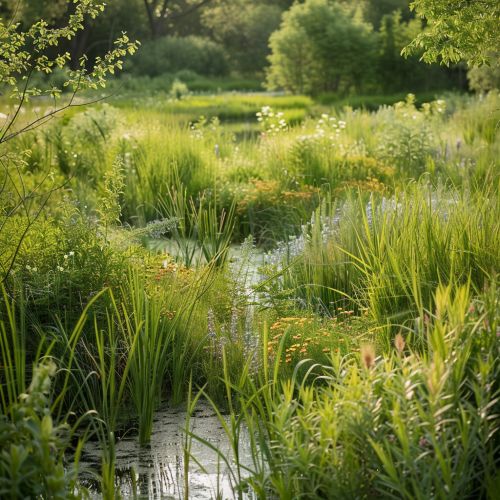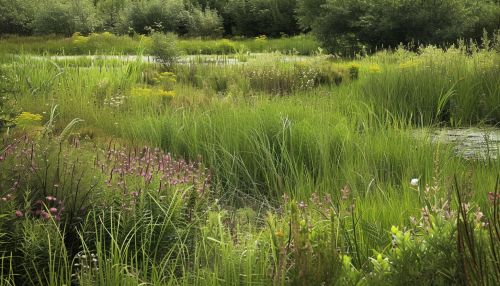Fen
Overview
A Fen is a type of wetland characterized by mineral-rich water and a high degree of alkalinity. These conditions result in a rich and diverse flora, often dominated by grasses, sedges, rushes, and wildflowers. Fens are unique ecosystems that provide habitat for many species of plants and animals that are not found elsewhere. They also play a crucial role in water purification, flood control, and carbon sequestration.
Formation and Characteristics
Fens are formed over thousands of years, as water from rainfall, snowmelt, or underground sources accumulates in a low-lying area. This water is rich in minerals leached from the surrounding soil and bedrock. The waterlogged conditions and slow rate of decomposition create a buildup of partially decayed plant material, known as peat. Over time, this peat layer can become several meters thick.
The water in a fen is typically alkaline or neutral, due to the presence of calcium and magnesium ions. This distinguishes fens from bogs, which are acidic wetlands formed in areas with high rainfall and low nutrient levels. The alkaline conditions in a fen favor the growth of specialized plant species that can tolerate high pH levels.


Flora and Fauna
Fens support a diverse array of plant and animal life. The dominant vegetation in a fen is typically grasses, sedges, and rushes, with a variety of wildflowers adding color and diversity. Some fens may also support shrubs and trees, particularly in drier areas or along the fen margins.
Many of the plant species found in fens are adapted to the waterlogged, alkaline conditions. These include species such as the fen orchid (Liparis loeselii), fen violet (Viola persicifolia), and marsh cinquefoil (Comarum palustre). Some fens may also support carnivorous plants, such as sundews (Drosera) and bladderworts (Utricularia), which obtain nutrients by trapping and digesting insects.
Fens also provide habitat for a wide range of animal species. Many species of birds, including waterfowl, waders, and songbirds, use fens for nesting and feeding. Fens are also important for amphibians and invertebrates, including many species of dragonflies, damselflies, and butterflies. Some fens may also support populations of mammals, such as beavers, muskrats, and moose.
Ecological Importance
Fens play a crucial role in the ecosystem. They act as natural water filters, removing pollutants from water as it flows through the fen. This helps to maintain water quality in downstream rivers, lakes, and groundwater sources. Fens also help to regulate water flow, reducing the risk of flooding during periods of heavy rainfall.
In addition to their role in water purification and flood control, fens are also important for carbon sequestration. The waterlogged conditions in a fen slow down the decomposition of plant material, allowing it to accumulate as peat. This peat acts as a carbon sink, storing carbon that would otherwise be released into the atmosphere as carbon dioxide.
Conservation
Despite their ecological importance, fens are under threat from a variety of sources. Drainage for agriculture, peat extraction, and urban development have all resulted in the loss and degradation of fen habitats. Climate change also poses a threat, as changes in precipitation patterns and increased temperatures can alter the delicate balance of conditions that fens require.
Conservation of fens involves protecting existing fen habitats, restoring degraded fens, and promoting sustainable use of fen resources. This can involve measures such as controlling drainage, reintroducing native plant species, and managing invasive species. Public education and awareness are also crucial for fen conservation, to ensure that these unique and valuable ecosystems are appreciated and protected for future generations.
